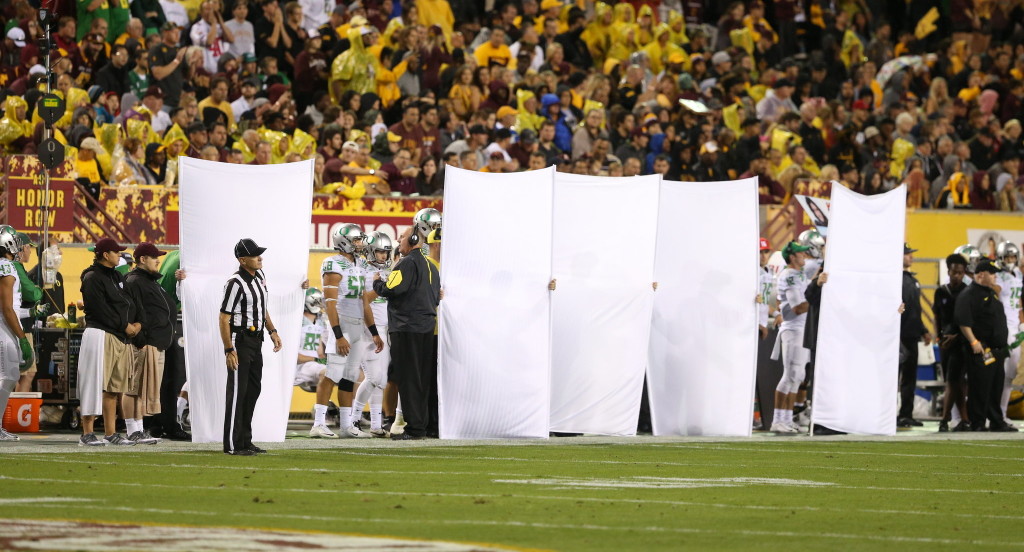Written by Matt Zemek at Bloguin
Stealing signs — the expression conveys the act of theft, which therefore makes it seem entirely inappropriate on the surface. Yet, we all know that stealing signs is a part of sports.
It shouldn’t ever be a point of discussion or the source of investigative activity, right?
Not according to Washington State coach Mike Leach (who’s done a bang-up job this season with the Cougars):
The most hilarious thing about this drama is that in the Hurry-Up No-Huddle (HUNH) era of football, the idea of sending plays in with players — a product of substitutions made at a deliberate pace — has become a lot more old-fashioned. The practice might not be what one would call “antiquated” or “outdated,” but its centrality is certainly not what it used to be. The point, though, is that if coaches don’t want to risk signs being stolen, they have ways to work around the problem.
Yet, let’s acknowledge that coaches don’t want their offenses to huddle, so as to prevent defenses from being able to make substitutions. The value of being able to substitute pales in comparison to limiting a defense to the same set of players. The ability to wear down a defense increases the more an offense can run plays without substituting. Keeping in place the HUNH or a similar emphasis on tempo is something which matters a lot to many FBS coaches, so one can naturally understand the insistence on using signs from the sideline.
What should be done on the matter of stealing signs, something Arizona State coach Todd Graham acknowledges his team does? Nothing.
At least, nothing other than this: Disguise your signs more effectively.
To continue reading this article, click here




